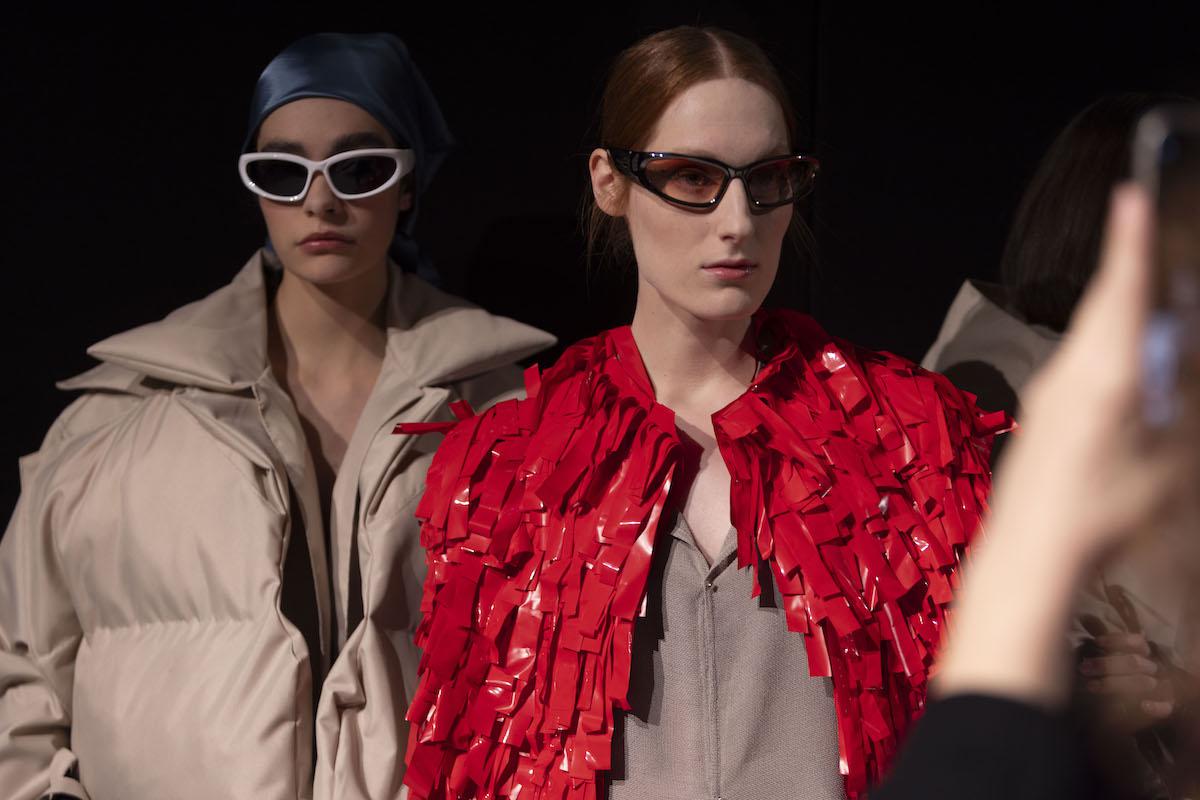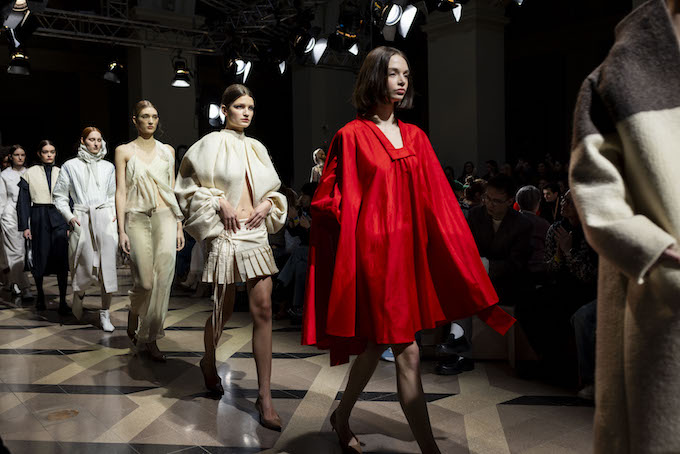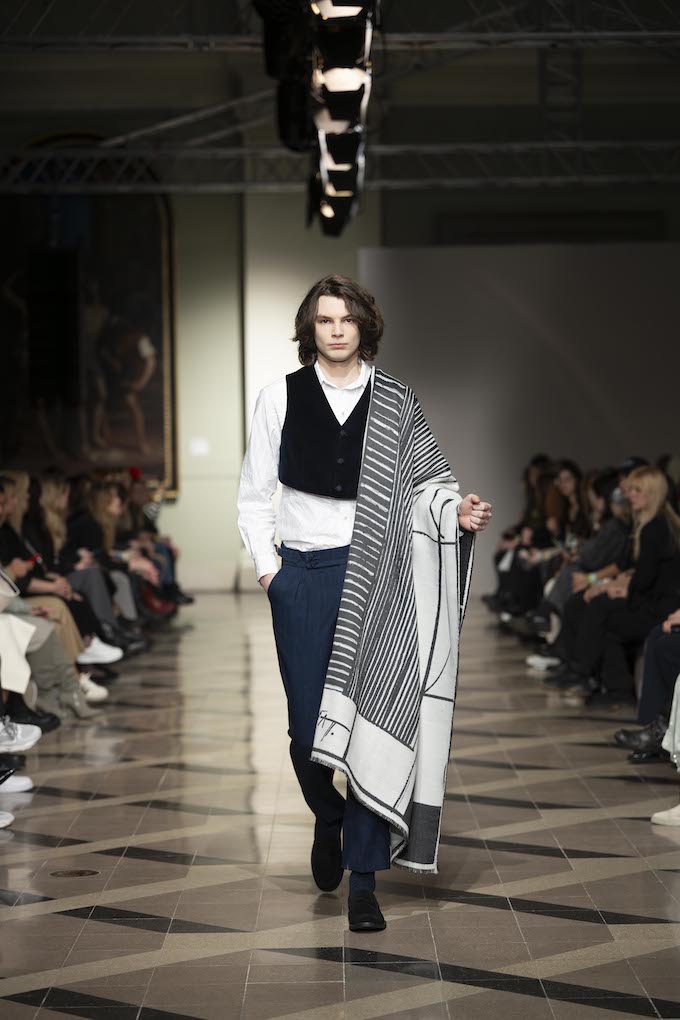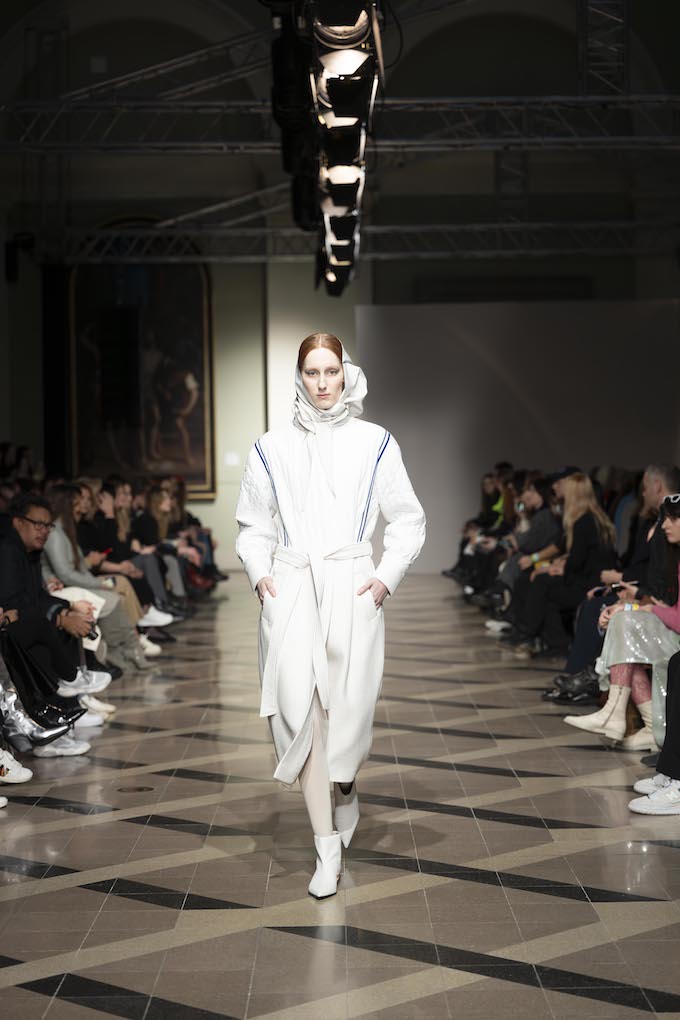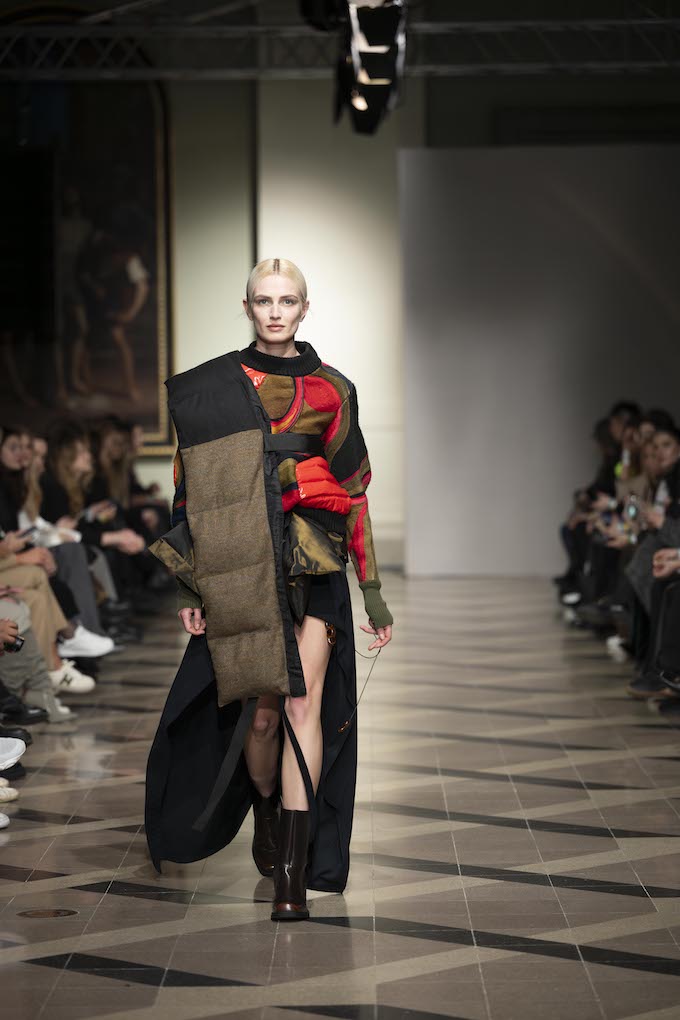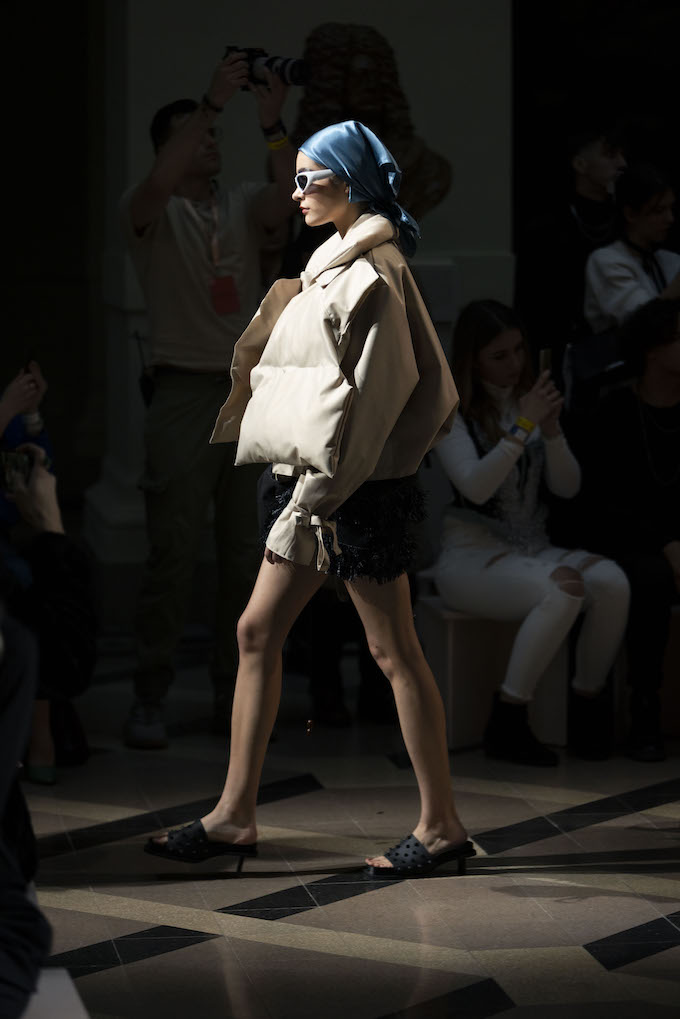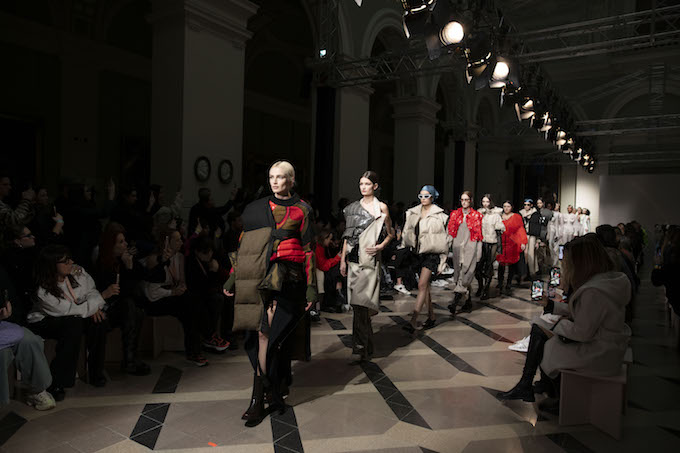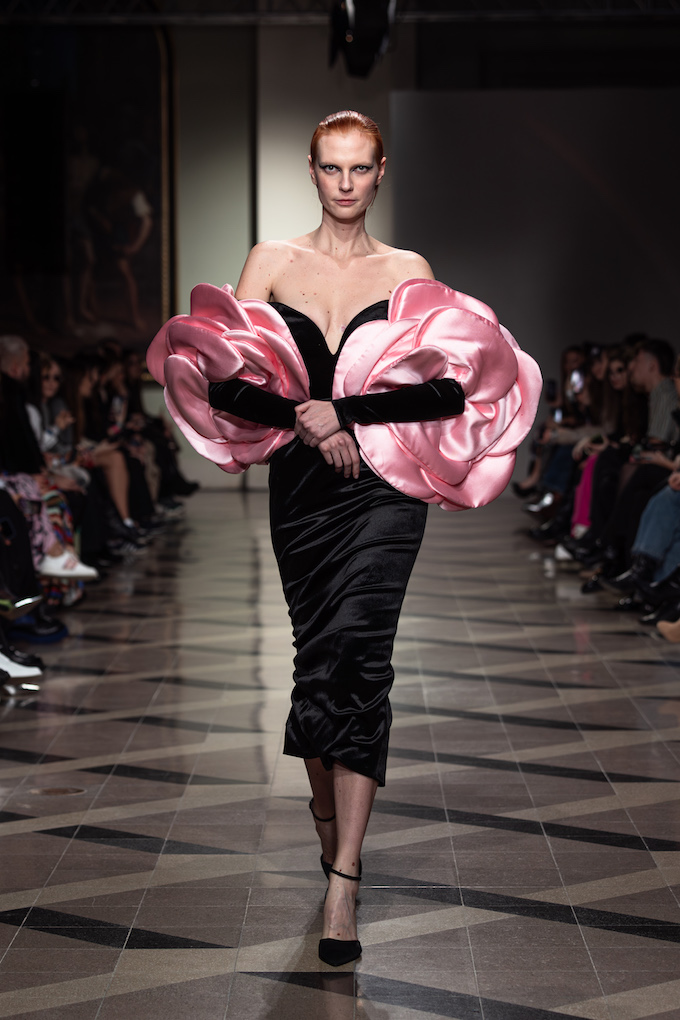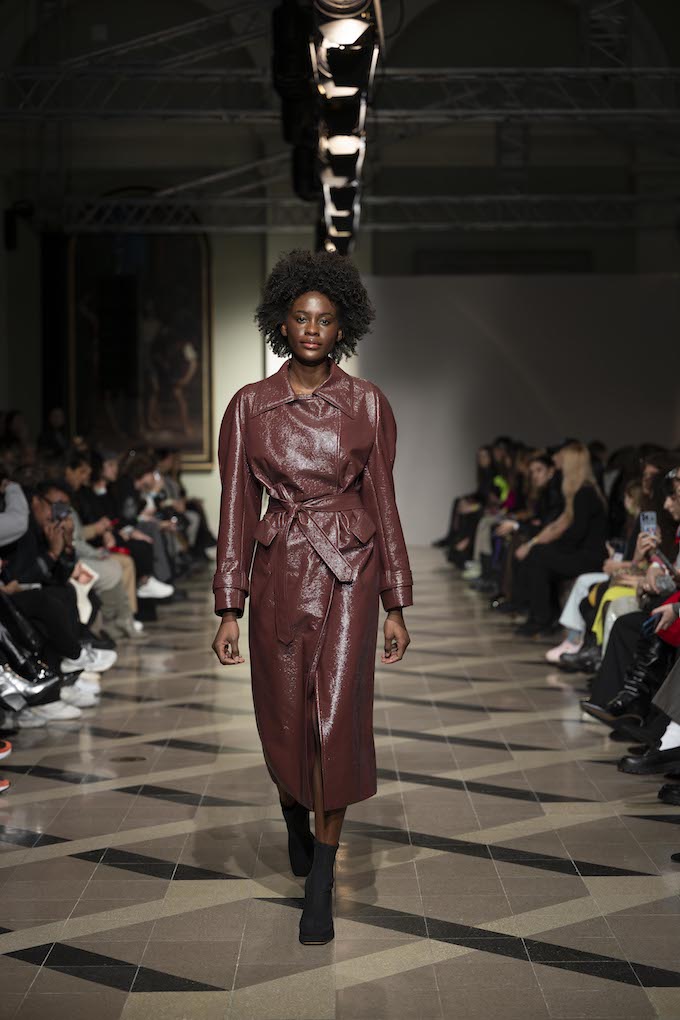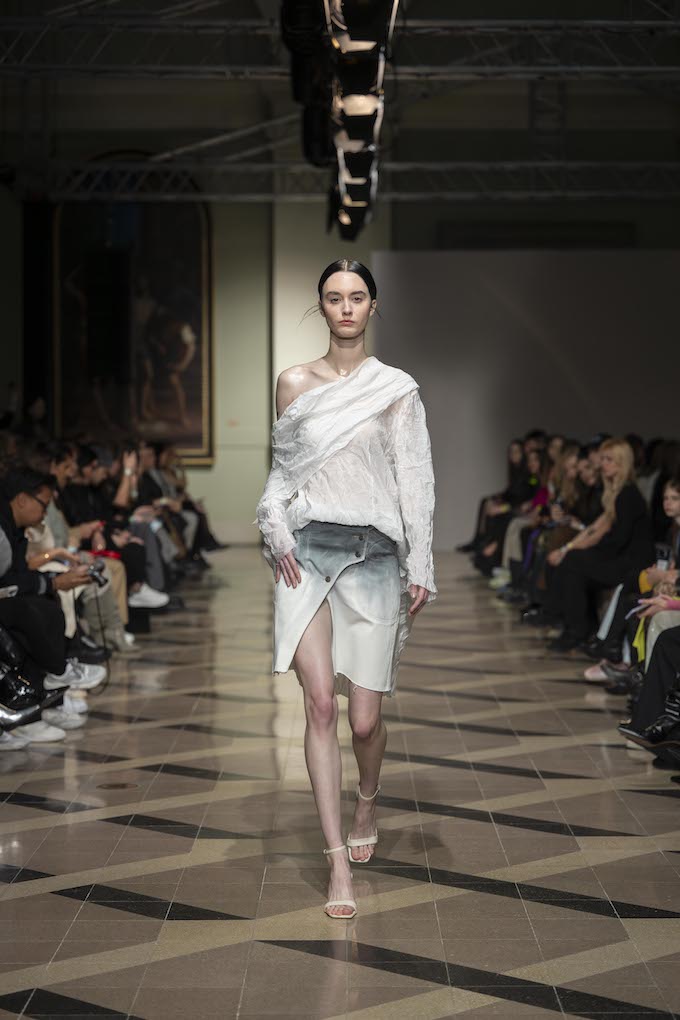You are as many people as languages you speak - so the saying goes. As a Croatian nationality from Hungary, I always raise an eyebrow when I hear at the local fashion week "let's see what the foreigners can do on the catwalk!" Foreigners? Well, who are they? As a child socialised in a multicultural environment - where there was bilingualism, Croatian dialects from the Drava, folk costumes, rituals - events like this have always given me something different. For two or three years now, since I've been going to BCE Fashion Week, when I hear a Slavic word or two, I feel straight away: yes, I'm home!
Fashion, a Slavic temperament, a sense of home - is that all you need?
On the two main days of BCEFW this year, we also got a glimpse of the autumn-winter collections of Slovak, Ukrainian, Polish and a Serbian brands. Their presentations also gave us a closer look at how fashion as art reflects on contemporary social events from the perspective of Central European Slavs. We experienced that the Hungarian and the Slavic approach are not so far apart.
The new generation and colours: white for hope, red for energy and black for respect for tradition
TONiA
TONiA is a Ukrainian womenswear brand, created by Antonina Belinska, who has been working as a costume designer in the film industry for 20 years. She launched her brand just one year ago, in 2023. Antonina is a specialist in historical costumes, the main characteristic of which is a richly detailed garment. The brand's capsule collection, Entropy, presented at BCEFW in the New Generation section, also has a touch of "costume". The details are so eye-catching that you want to see every inch of the garments.
The colour of the outfits was simple white, yet throughout the catwalk show there was a sense of monumentality mixed with a touch of childish playfulness. In Antonina Belinska's Entropy pieces, the disorder of a system was literally captured in a whole.
"The creation of this collection was a revival of my childhood because all my life I dreamed of creating my clothes," - says Tonya Belinska.
Even with the use of white fabrics, the collection exudes sexuality. The flowers at the bust evoke naive art reminiscent of children's drawings, combining the tenderness and sexuality of the modern woman.
ELIZ
The Slovak desiner, ELIZ' collection goes back to the old crafts. Karin Elízová collaborated with a young farmer who raises Jacob sheep, a very rare breed of sheep, to create the autumn-winter 2024-25 collection. The look of the show was also reminiscent of this rural life.
The main colours of the collection are black and white, with some beige and earth tones. The texture of the high quality, ethically processed wool was a fantastic sight to behold; it chimed interestingly with the red dress that followed, evoking the colours of folk costumes.
JANEVAT.
The Slovakian brand JANEVAT. entered the catwalk with clothing creations that perceive textiles as a versatile medium. The blanket held by the model served the function of a kind of installation. The aim was to embellish not only the wearer of the garment, but also the space. According to Jana Vaterková, this is how the object becomes a work of art.
The brand also draws attention to the overall artistry of fashion.
My personal experience is that the sight of a garment can be as cathartic as a painting or other work of art.
SZCZYGIEL
The Polish brand SZCZYGIEL is committed to recycling, so Ania Szczygieł does thorough research before every design. The inspiration for her latest collection comes from her travels around the British coastline, the high mountains, deep valleys, expansive forests, rivers and marshes, and dramatic coastlines. Invoking the diversity that nature craves, the clothing range also hints at diversity, expressions of individuality, anarchy and power.
The master of layering already
drew attention to himself last year, and the new collection also features variety, playful textures, a fusion of shapes and colours, the design of the lifejacket, the structural elements of the boat.
The absolute favorite was the fiery red shiny and hanging top with a finger-thick strand of thread.
MIHANO MOMOSA
While the Slavs from the north were characterised by a more ritualistic use of colour, the Serbian MIHANO MOMOSA from the south impressed us with fresh colour contrasts and art nouveau effect spatial floral forms.
The ornamental elements included some streetwear-influenced outerwear that shouted out to the world with their strong messages: 'Don't look back'; 'Follow my lead'...
There was a longer text that looked like a "Messenger message", which unfortunately we didn't get a chance to read there, and we've been looking for it ever since.
We really liked Momosa, and the "flower head crowns" made us think of the Hungarian brand VIRÁG KERÉNYI.
It's all in the details
SIDLETSKIY
From the Ukrainian brand SIDLETSKIY, my favourite was the shiny burgundy red coat.
Ihor Sidletskiy's autumn-winter collection embodies the interior space of each of us. A strength and identity that becomes even more intense when you wear the clothes. Each garment is an expression of individuality, with accentuated contrasts and details symbolising inner strength.
Importantly, SIDLETSKIY's new collection is not only a fashion collection, but also an expression of personal essence through sophisticated style and attention to detail.
GASANOVA
GASANOVA, another Ukrainian brand, has inspired its latest collection with a basic tradition such as family gatherings and cooking together.
The designer imagined the garments to be as basic as the warmth between loved ones. The colour palette is a sophisticated blend of noble shades such as deep burgundy, earthy brown, luxurious gold, which evoke a sense of celebration and luxury, but also of sophistication.
Textures play an important role in conveying the essence of the collection: suede and leather give the clothes a tactile dimension. And the G logo, braid details, stones and rhinestones add a touch of glamour and individuality to each garment.
SAGIO
I mention the SAGIO brand here because although the brand is based in Budapest, the designer behind it, Alexander Sagio, has had a very multicultural journey (broadly speaking, this is a characteristic of the Slavic ethnic group.) Born in Baku, he has moved between the West and the East, falling in love with Florence and Budapest.
The main inspiration for the INTELLECTUAL FEMINITY collection is the high quality of the handicraft, the loose yet detailed, unique tailoring and the dominance of the nude female figure.

It's a rare scene to see Alexander walking down the catwalk at the end of the show, just like the models. I think a collection and a brand is much more likeable when you get to know the creator behind it. Even if it's just for a minute or two, the way he strides proudly and confidently through the line, he comes a lot closer to us than someone who steps out for a few seconds, bows and whoosh, he's gone.
In my opinion a garment could not come into creation without the individual behind it, and the concept that comes to life in their mind I would like to see more of this, and I propose that Alexander's habit be institutionalised. We will follow the creators with as much awe as the collection that has gone before them.
______
The author, Gordana Szolga, is journalist, student of translation and interpreting, specialising in Russian and Croatian.
_____
On the cover: SZCZYGIEL
Photos: HFDA/The Sparkle Content

